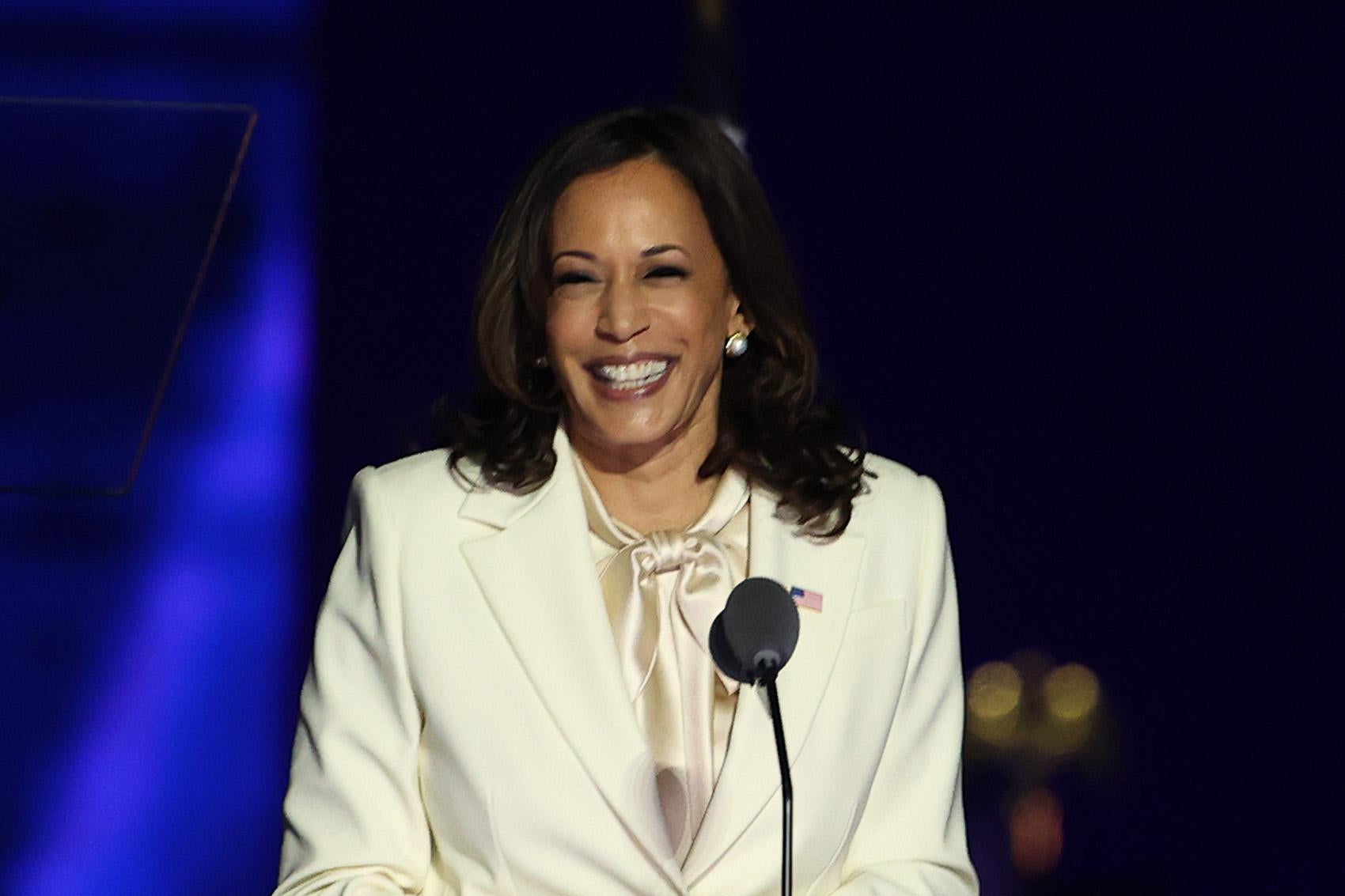To be liked by voters, American political candidates must appear to be good leaders and they must exemplify traits that are associated with their gender. For men, this is simple, because traits that we read as “male” are also associated with being a good leader and executive. We’ve demonstrated this in our research, in which we asked 2,000 Americans to rate the ideal U.S. president and various candidates on 64 traits that can be classified as masculine (e.g., dominant, self-reliant), feminine (e.g., gentle, empathetic), or neutral (e.g., honest). What we found is that most Americans think that the ideal U.S. president will have more traits typical of men than women. (Yes, the survey respondents’ views are likely influenced by the fact that we’ve only had male presidents.)
In our survey, Donald Trump, for example, was rated as highly masculine, 71 on a 100-point scale, and not at all feminine, 30 out of 100. This low femininity score doesn’t hurt Trump. Men just need to be themselves—masculine—to fit the mold of the ideal president. Hypermasculinity does not lead to penalty when running for office.
It’s not so simple for women. Too feminine and they lack credibility, too masculine and they risk backlash for not being feminine enough. The average American woman is seen as warm and thoughtful about other people’s needs and wants, and women who do not embody those traits are disliked. To be viewed favorably, women candidates must somehow be feminine—warm and likable—and also masculine—competent. This is the “likability trap” that women running for political office face.
How does this play out with an individual female candidate? Our research suggests that in 2016, Hillary Clinton was penalized not because she was too masculine, but because she lacked femininity. She was rated 72 on a 100-point scale for masculinity but only 46 for femininity. Her leadership and competence were necessary traits for voters to see her as presidential, but her seeming lack of warmth violated expectations for her gender. A presentation that wouldn’t have hurt a man probably ended up hurting her.
But in 2020, Kamala Harris succeeded where Clinton did not. Potential voters view Harris as masculine, 74 on a 100-point scale, a pattern similar to the ideal president and similar to earlier ratings for Clinton. Unlike Clinton, however, Harris was seen as highly feminine (66 on a 100-point scale). Her masculinity and femininity were more balanced. Not surprisingly, the people we surveyed rated Harris more favorably than they rated Clinton.
Two qualifications are in order. The first: Clinton ran for president, while Harris ran for vice president. That probably affected how favorably each woman was viewed. When Harris was a presidential candidate, she was not viewed favorably, even though she displayed the same “masculine” and “feminine” characteristics all along. The shift in her favorability once she became a vice presidential candidate may have been partially due to her now subordinate position, a position women “should” occupy.
The second qualification is race: Clinton is white, and Harris is biracial (Black and Asian). Research on intersectionality suggests that people hold shifting standards of the average woman depending on other salient identities, such as race or ethnicity. The intersection of race and gender creates a unique space for nonwhite women, which comes with its own set of societal expectations and requirements. Clinton and Harris may not be held to the same femininity standards. For Harris to smile and respond warmly—challenging stereotypes of Black women as aggressive—might make her femininity more striking than it might be coming from a white woman.
Though we cannot separate the effects of race, gender, and political position in comparing Clinton and Harris, we do know that in 2020, Harris seems to have met the feminine-masculine demands more successfully than Clinton did in 2016. We can try to break that down: While both women demonstrated competence, Kamala Harris smiled frequently and warmly during her debate with Mike Pence and during her media interviews. Clinton tended to appear scripted and inauthentic. That might explain why they differ in how they represent the category “woman.” Even so, it was not all clear sailing for Harris. She received negative gender coverage—even if less than what Clinton had to deal with—and also had to deal with negative racial coverage.
What about the future? Women are increasingly successful at winning seats in state and national legislatures and becoming state governors. And now one is vice president–elect. As they run, and win, we will get a better sense of what resonates with voters. And maybe, as voters see women occupying these types of positions, their perceptions of what makes a successful candidate will change too. It will probably be slow. Our expectations for how women should act are not going to change in the short run. Women will have to continue to balance so-called feminine and masculine characteristics in order to be accepted by voters. But eventually, maybe, things will get simpler for women running for political office.

